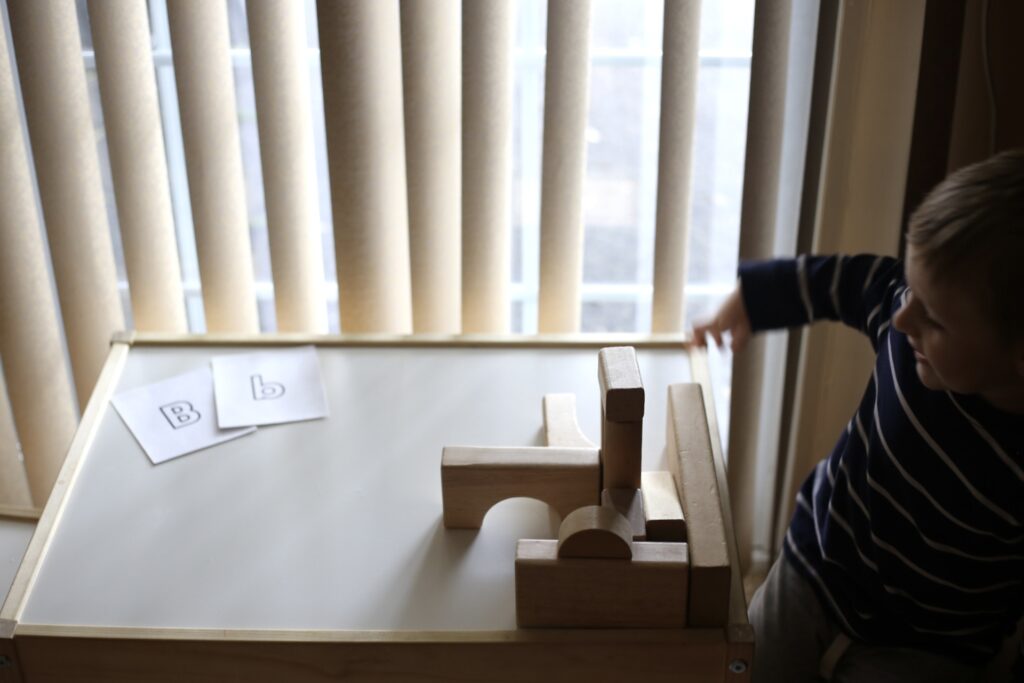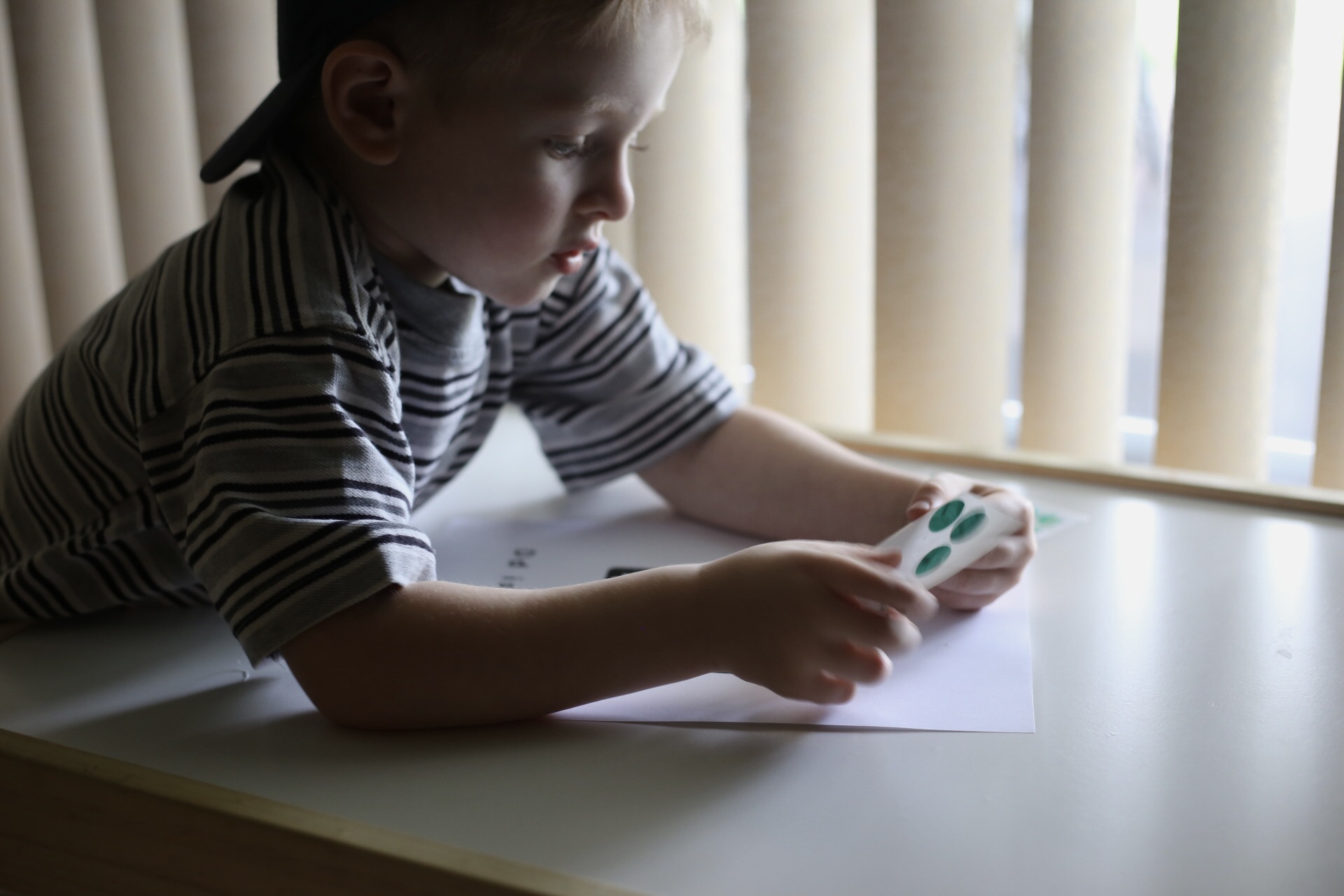If you are currently spending your days with a child between the ages of two and four, I’m excited to share a collection of resources that I have gathered and created for learning together. This week I’ll be sharing the first week in a series of plans for home preschool that include book lists, poetry, art projects, memory verses and more. If you don’t need the plans in their entirety, there still might be some useful odds and ends there for you and your little one.
I initially put this post out there excited about sharing something I’ve worked very hard on. And that is true. But it’s also true that I’ve worried about the perceived tone of articles like this and how they can contribute to making people feel inadequate and overwhelmed and disoriented.
So, I’m going to say a lot of things you’re probably not supposed to say on a blog that wants you to keep reading.
Like how these plans aren’t magic and our days aren’t perfect, but they have brought a lot of goodness and beauty to our days.
Like how these plans are created by me, a mother and nanny who simply loves the process of creation and curation and teaching little ones how to love learning.
Like how if you are happy with your current home preschool situation, this might not be the place for you right now because comparison is the thief of joy. I care about your heart and peace of mind and sometimes no matter how content you are with what you’re doing, seeing what everyone else is doing can be disorienting. So, here is my unsolicited advice to listen to what you need right now: Is it more or less? There might be something really good here for you at another time when you need it.
BUT…if you are looking for some resources and ways to learn with your children that are beautiful and simple and playful and creative (and free) then I think you’re in the right place.
THE BEST TIME FOR HOME PRESCHOOL
The dreamer in me says that the answer is: in the peaceful morning hours, by gentle morning light and to the sound of birds brightly chirping the chorus of a new day.
But the actual answer is: whenever feels right and functional for you and your family. My days are currently spent with three children under three and so they are predominantly marked by rhythms of playing and eating. I try to make space in each day for moments of reading, creating, and connecting. And if all of that happens, we count it a lovely day.
But I have found that I am my happiest self (which has a trickle down effect) when I have a plan for the week that includes a bit of structured learning as well. It’s brief, but meaningful. I’ve found that it just makes sense for us to tag our intentional learning times onto the beginning or end of meals and snack times.
I’ve experimented a lot with rhythms and learning plans and finally feel like I’ve landed on a good balance for us. (Maybe just in time for it to change, as my experience has shown me thus far.) It’s structured by week instead of by the day, which has been really helpful for keeping with it. My personality feels quickly defeated with day by day plans when we miss things. If I fall behind I feel like I have to play catch up, until the inevitable, eventual giving up. With a week at a time, it feels like we can be more flexible with weather or sick days or good days/bad days and focus on some of our goals for that week when it suits us best. And whatever we do miss, we can pick up the next time we cycle through.
*Update: This rhythm worked perfectly when my nannying hours were longer. Now our days are shorter and so we’ve adjusted accordingly. So, this series is evolving from its original format to serve all parties a little better. Each week will consist of either a nature study or a letter study. Each study will offer a book list, art study/projects, poetry, a piece of scripture to study, and some sort of mathematics or basic skill (counting, shapes, color sorting, patterns, size sorting, etc.).

WHAT YOU’LL FIND IN EACH WEEK’S PLANS
Each week is guided by a letter of the week in instances where it makes sense, but it’s never forced if there’s something else that feels more natural to lean into. Each week you’ll find:
- Book List
- Poems
- Art Study/Projects
- Mathematics/Basic Skill (Colors, Shapes, etc.)
- Scripture Study
BOOK LIST — Each week you’ll find a book list of books that feature the letter of the week or the nature study for that week. These are books that we have read and enjoyed as either part of our own collection or from our local library.
POEMS— We’ve been transitioning one of our snack times each week to a poetry time. Sometimes I’ll read the poem while they snack, sometimes there will be a line or two that we try to commit to memory. Poetry and books are some of my favorite ways to introduce new language.
ARTS — This has been an important one to me and probably the one that brings me the most joy. We study an artist or a composer each week. The goal is exposure to beauty, not for them to retain all the information. We check out books from the library on the artist if there are any, we usually try to create some sort of process art inspired by the artist or listen to the composer of the week. If there’s one that fits with our letter for the week, I chose that one. If not, there are always plenty of others to choose from. (We LOVE the Story Orchestra book series, because they pair visual art and story to classical music pieces. It’s because of them that Graham says things like, “Alexa, play Tchaikovsky!”)
MATHEMATICS + BASIC SKILLS — This has looked like numbers/counting practice, introducing their minds to recognizing patterns, learning to identify shapes, sorting by size/color, etc.
SCRIPTURE STUDY — I am very picky about teaching good theology to kids and that can be a real challenge at times. What has felt the most right for us in this season of childhood is exploring what God is like together. We do this through Bible stories and scripture. We talk about the attributes of God. We learn to pray memorized prayers and how to pray from the heart. We ask questions. We memorize truth together.
Each week you’ll find links to all the resources (books, art tutorials, poems, etc.) and there is also a printable one sheet outline with the plans for the week. For many letters, you’ll notice there are more activities listed than what we’ve done for the week. These are ones I intend to switch out the next time we cycle through and are a perfect option if one works better for your current situation (resources, time, attention, interest, etc.). I’ve supplied the one sheet for those who might be fellow sufferers of decision fatigue, but I do desire for this to be a collection of quality resources that you can pick and choose from.

These resources are free for personal use. I am familiar with the experience of having a price point prevent me from using some of the resources that I might use if money weren’t a factor. So, they’re free! It’s my hope that they might add some beauty and learning and moments of connection to your days. Enjoy and just be sure to link back if you share them.







3 Comments
Robin Yinger
Well I was intrigued by what you wrote. How you formulated all these areas that you want to teach them and help them explore while learning. I’ve often said that we put so much pressure on ourselves when we’re trying to “teach children”. But just the day-to-day things that we do and the things that we can use to just Play and Learn are the most effective. I wish I would have learned when they were younger to do these types of things more consistently I did the best I could but now I have an opportunity to do these things with my grandchildren. Your beautiful son Graham being one of them! Thank you so much for sharing this I look forward to reading more and printing out some of these resources for use while I play and spend quality time with my grandchildren.
Pingback:
Pingback: